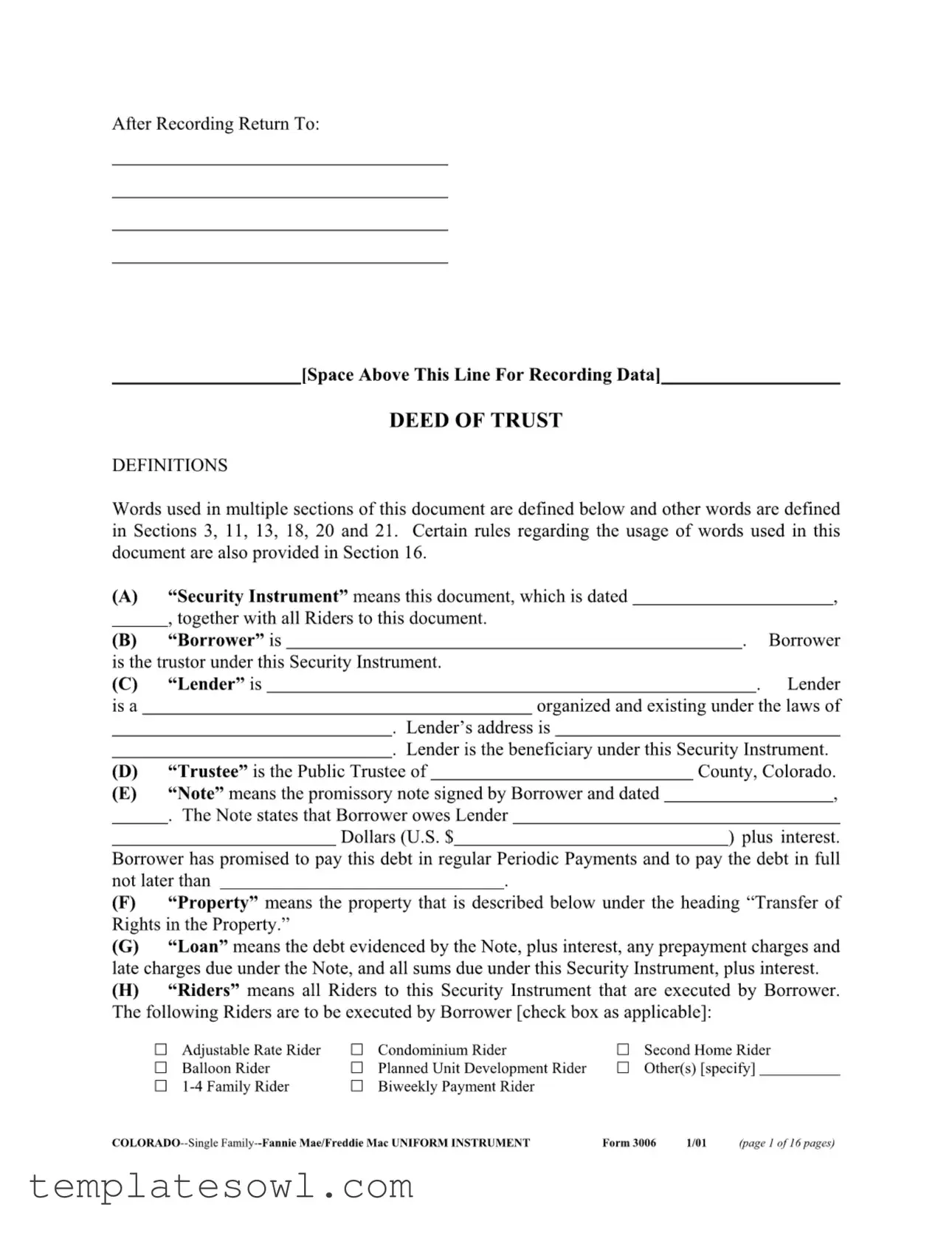What is the purpose of the Colorado 3006 form?
The Colorado 3006 form serves as a Deed of Trust, which is a legal document that secures a loan by transferring the title of a property to a trustee in trust for the lender's benefit. The form establishes the obligations of the borrower to repay the loan and outlines the security interest the lender has in the property described. It is essential for formalizing the terms between borrowers and lenders and provides a framework for foreclosure in the event of default.
Who are the parties involved in a Colorado 3006 form?
The Colorado 3006 form identifies three main parties: the Borrower, the Lender, and the Trustee. The Borrower is the individual or entity seeking funds, and they promise to repay the loan to the Lender, who is the financial institution or entity providing the loan. The Trustee, usually the Public Trustee of the relevant jurisdiction, holds the title to the property on behalf of the Lender until the loan is paid off. This structure protects both the lender's interests and the borrower's rights.
What are the key definitions included in the Colorado 3006 form?
The form contains several important definitions, such as the terms “Security Instrument,” “Property,” “Note,” and “Riders.” The “Security Instrument” refers to the Deed of Trust itself. The “Property” refers to the real estate collateralizing the loan. The “Note” is a written promise to pay the amount borrowed. “Riders” may include additional agreements or stipulations that modify the primary loan agreement. Understanding these definitions is crucial for all parties involved to comprehend their rights and obligations fully.
What happens if a Borrower defaults on the loan?
If a Borrower defaults on the loan, the Lender can initiate a foreclosure process to recover the loan's outstanding balance. The Deed of Trust provides the Lender with the authority to sell the property through the Trustee. This process allows the Lender to recoup losses while providing Borrowers an opportunity to remedy the default within a specified time frame. It is crucial for Borrowers to communicate with their Lender if they are experiencing financial difficulties to explore potential options.
Are there any additional costs associated with the Colorado 3006 form?
How does the Colorado 3006 form protect both Borrowers and Lenders?
The Colorado 3006 form offers protection to both parties by clearly outlining their rights and responsibilities. For Lenders, the form secures their investment by allowing them to take action in case of non-payment. For Borrowers, the terms detailed in the form ensure they have a clear understanding of their obligations, including payment schedules and potential penalties for defaulting. Additionally, it provides avenues for Borrowers to remedy deficiencies, fostering fairness and transparency in the lending relationship.










